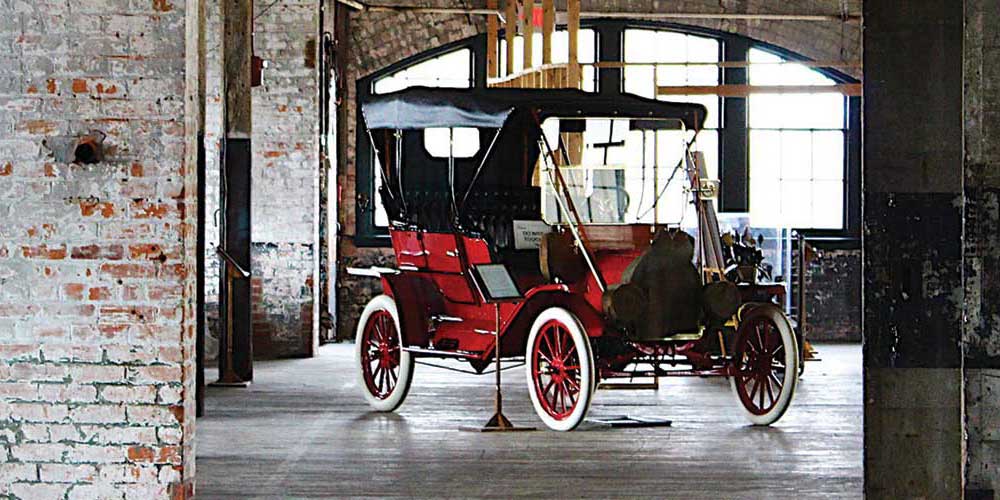By Robert Tate, Automotive Historian and Researcher
Images from Robert Tate's collection
Posted: 06.28.2016
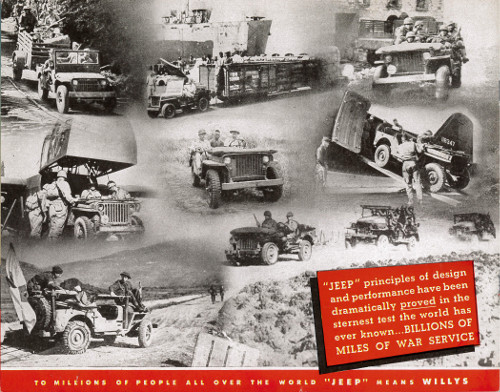
One of the most admired and talked about vehicles within our automotive heritage and culture is Jeep. This is a story about the early years (1940-1960) of the Jeep name and how it has become a great and recognizable symbol for American automotive manufacturing.
For many years, Jeep has had a loyal following and interest in our American culture which many people have admired and have continue to follow especially in 2016 as Jeep celebrates 75 years.
The legacy of the Jeep brand began with production of the 1940 Willys Quad, which was the original pilot model delivered to the U.S. Army. It was the Willys MA model, however, that was eventually selected as the standard military vehicle.
[ Editor's Note: In 1940, the American Bantam Car Co. delivered the first prototype “jeep” model to the U.S. Military before Willys-Overland. Willys, Bantam and Ford all developed prototype models for active Military use. ]
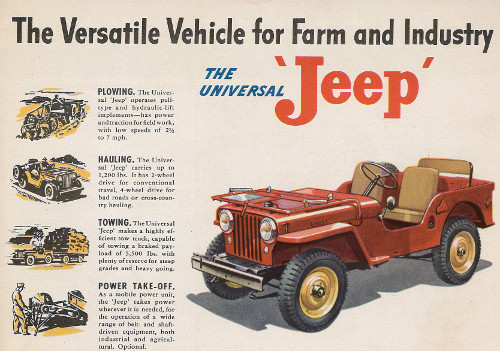
Jeep started universal production in August 1945. It was considered a work vehicle that offered a wide operating range and broad versatility of usage for war and consumer needs. At this time in American history, WWII had changed the economic status of the motor car. The universal Jeep was the famous military Jeep in all basic features. During the war-time efforts, the Jeep was a great Army vehicle used for a wide variety of operations from the early days of combat to convoy duty.
The durability and longevity of the Jeep has become somewhat legendary in automotive heritage. It has been said that “The sun never sets on the mighty Jeep,” and it’s true with its world famous L-head four-cylinder, 60- horsepower Jeep engine which was a product of many years of research and development. The engine was designed for and used in civilian automobiles produced before the war by Willys–Overland Motors. During the war-time efforts, the engine had earned a reputation for unparalleled dependability. As one soldier once said “It runs and runs and runs.”
After the war had ended, Jeep continued to be a major player in the auto industry. General George C. Marshall, then U. S. Army chief of staff, described the vehicle as “America’s greatest contribution to modern warfare.” The new post-war Jeep models offered the consumer a variety of different features that most consumers really like and admired.

During the late 1940s, Jeep continued to offer a variety of great looking models for the consumer market. For example, the Jeep station wagon models with their all-steel body and top were stylish and unique designs. The all-steel Willys wagon was a Brooks Stevens design, and served as one of the first all steel-body station wagon models in the American industry.
The body and door panels offered the consumer a grained finish body and door panels to match the popular simulated leather seat coverings. Even with great style, the Jeep station wagon was also a very practical vehicle that the consumer could use for almost everything.
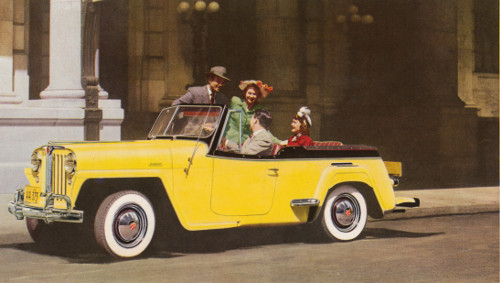
Another popular Jeep model was the Jeepster. The Jeepster was a great looking Jeep design for the consumer market. The models featured a fabric top, which was easy to raise, along with matching side curtains with plastic windows and comfortable posture seats. The models also came with dual windshield wipers, a deluxe steering wheel, chrome-plated fender steps, oversize hubcaps, a fabric tire cover and front bumper guards for safety.
On June 13, 1950, history was made when Willys-Overland registered the Jeep name as a trademark both in the United States and internationally. In 1953, Henry J. Kaiser acquired the company for an estimated $60 million to go with their own line of Kaiser Motor vehicles. The new name plate became Willys Motors, Inc.
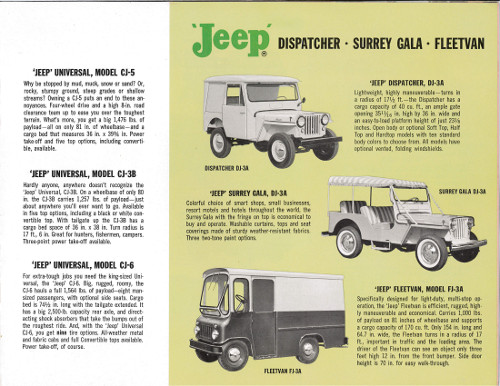
The 1960s was a decade for updated changes with Jeep models which included more sport-utility models and the introduction of the Gladiator pickup trucks. In 1962, Jeep introduced the great looking Jeep Wagoneer model which became an instant and great success among American buyers. In a March, 1963 announcement, Kaiser Industries Vice President S. A. Girard informed the U.S. public that Willys Motors, Inc. was changing its name to the “Kaiser Jeep Corporation.”
In conclusion, the Jeep name plate has a great heritage and recognizable history especially within the U.S. Armed Forces. For more information on Jeep history please read, “Jeep: The History of America’s Greatest Vehicle” by Patrick R. Foster or “Jeep: History of a World War II legend,” by David Dalet.
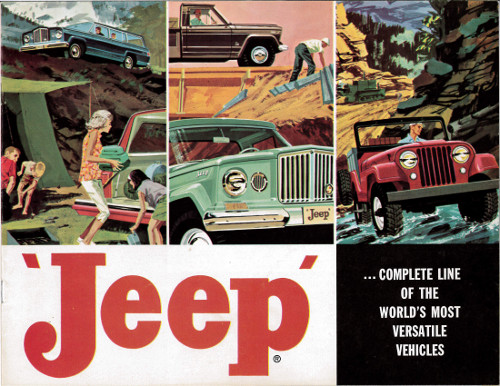
A special thanks to Robert Tate, Automotive Historian and Researcher, for contributing this story to the MotorCities Story of the Week Program.
For further information on photos please visit http://www.detroitpubliclibrary.org/ or email This email address is being protected from spambots. You need JavaScript enabled to view it.. Please do not republish the story and/or photographs without permission of MotorCities National Heritage Area. (Bibliography:
Narus J., Donald: “Great American Woodies and Wagons” Crestline publishing 1977; American Motors Corporation: “Jeep 50th Anniversary,” “Jeep the first 50 years;” Life magazine. “The Jeep life presents the inspiring and humorous life story of the Army’s new and incredible little car” July 20, 1942.)


